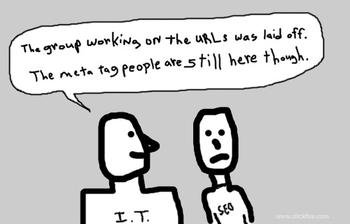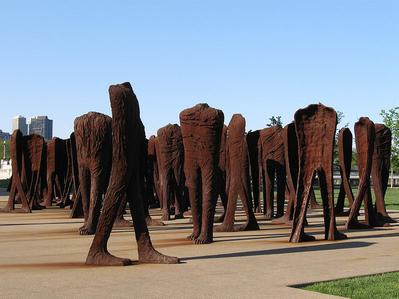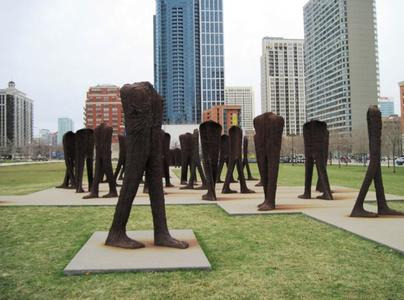Criticisms of Free Culture/Open Source Movements
From the previous pages, it can be seen that there are a number of groups interested in promoting a freer and more open culture especially in relation to education. But these movements are not without criticism. Groups who feel their intellectual property is up for grabs are often vocal opponents of open culture. See the debate between Lawrence Lessig and Jack Valenti on the page CopyRight/Copyleft for a discussion of copyright and artists rights.
 Jaron Lanier musician and computer scientist who coined the term "virtual reality" calls open culture "digital Maoism" and "hive thinking." For him, the collective contribution comes at the cost of individual creativity. He feels the “drive-by anonymity” fosters pack behavior. Although he acknowledges generous collaboration in things like Wikipedia, he feels "open culture” and “information wants to be free” ideas produce a destructive social contract. The basic idea of this contract, “is that authors, journalists, musicians and artists are encouraged to treat the fruits of their intellects and imaginations as fragments to be given without pay to the hive mind. Reciprocity takes the form of self-promotion. Culture is to become precisely nothing but advertising.” Lanier's complaint is that the "digital peasants' (as he calls them) are the ones who produce work for the "Lords in the Clouds" like Google and YouTube. (Tierney, 2010; Lanier, 2010.)
Jaron Lanier musician and computer scientist who coined the term "virtual reality" calls open culture "digital Maoism" and "hive thinking." For him, the collective contribution comes at the cost of individual creativity. He feels the “drive-by anonymity” fosters pack behavior. Although he acknowledges generous collaboration in things like Wikipedia, he feels "open culture” and “information wants to be free” ideas produce a destructive social contract. The basic idea of this contract, “is that authors, journalists, musicians and artists are encouraged to treat the fruits of their intellects and imaginations as fragments to be given without pay to the hive mind. Reciprocity takes the form of self-promotion. Culture is to become precisely nothing but advertising.” Lanier's complaint is that the "digital peasants' (as he calls them) are the ones who produce work for the "Lords in the Clouds" like Google and YouTube. (Tierney, 2010; Lanier, 2010.)
James DeLong of Digital Society: Pro Consumer, Pro Commerce finds it difficult to resolve the positions of the various free movements. On one hand he sees some who would fight for everything to be free and the other he sees those who see a need for intellectual property rights to ensure artists get paid and others get paid to distribute work. DeLong says, " Part of the FCM (Free Culture Movement) says that information wants to be free, and intellectual property is an obsolescent abomination. Only if everyone can access everything without restraint will we be truly free and creative. The other wing acknowledges a need for intellectual property, but whatever concrete means of protection under discussion at the moment is wrong, and the content producers should find some (unspecified) “new business model” that does not involve protecting intellectual property. If content creators are suing P2P pirates, it is terrible to attack one’s own customers. If they file take-down notices with YouTube, they are charged with inhibiting fair use. If ISPs try to control piracy, this is called a violation of net neutrality. If recidivist pirates have Internet access cut off, it is Orwellian. If Digital Rights Management software is used, this is regarded as violating the consumers’ rights, which justifies unlimited distribution of code-cracking tools." (DeLong, 2010)
Andrew Keen in Cult of the Amateur argues that the Web’s democratic allowance of mash-ups, remixes and reposts of other content threaten s jobs not just copyright laws. He feels the very ideas of authorship and intellectual property are under siege.
s jobs not just copyright laws. He feels the very ideas of authorship and intellectual property are under siege.
In Free: The Future Of A Radical Price (Anderson 2009), Anderson addresses some of the collateral damage associated with the “de-monetization” of goods and services on the Internet. “While it’s great that technology tends to lower prices, its disruptive when one of those prices is your salary…this race to the cheapest, most efficient models has a real human cost” (p.126). He further goes on to describe the potential to squash competition based on what economists refer to as network effects. “In traditional markets, if there are three competitors, the number one company will get 60 percent share, number two will get 30 percent, and number three will get 5 percent. But in markets dominated by network effects it can be closer to 95 percent, 5 percent and 0 percent. Network effects tend to concentrate power---the rich get richer …Rather than a range of products at different prices, it tends to be winner-take-all.” (p. 132-133).
Other concerns exist regarding the impact of constant exposure to free-with-advertising models that students are bombarded with. According to Massey, in The Impact of Advertising on Teenagers (Massey 2006), the average child sees approximately 20,000 commercials a year… Teenagers are probably more influenced by advertising than any other age group yet they do not fully understand the impact that advertising has on them or the role advertising plays in serious social problems in our society.
Faceless in the Cloud


Agora is the name of a group of 106 headless and armless iron sculptures at the south end of Grant Park in Chicago. Designed by Polish artist Magdalena Abakanowicz, the figures are nine feet tall and weigh about 1,800 pounds. The name Agora refers to the meeting places of the Ancient Greek city-states. The bronze headless figures appear to be milling about in a crowd and have been described as "brainless organisms acting on command”. Other interpretations have claimed the figures represent how we now wander around oblivious and unthinkingly attached to our mobile devices.
http://en.wikipedia.org/wiki/Agora_(sculpture)
Next up see Copyright/CopyLeft
